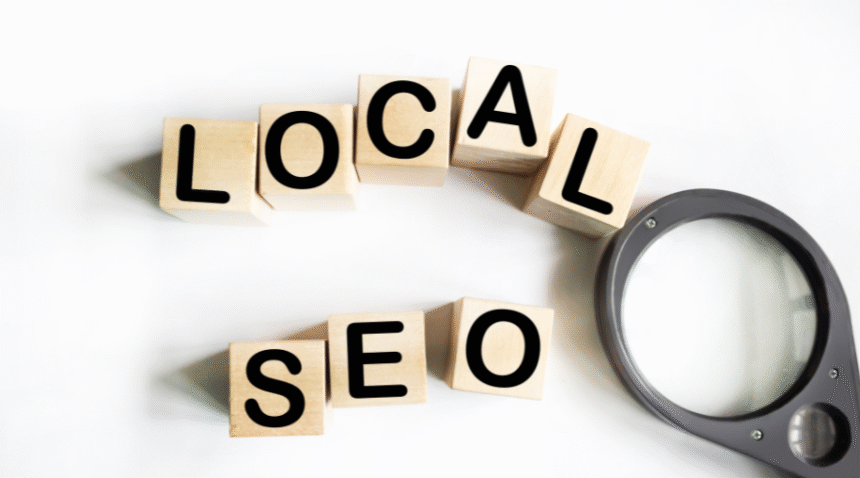India’s e-commerce scene is a goldmine, projected to hit $200 billion by 2026, but standing out in this crowded bazaar is no cakewalk. For brands—big or small—local SEO is the secret sauce to connect with nearby customers and drive sales. It’s not just about ranking high on Google; it’s about being the go-to shop for someone in Bengaluru craving artisanal coffee or a Delhiite hunting festive kurtas. Let’s dive into how Indian e-commerce brands can harness local SEO to boost conversions with practical steps tailored to this vibrant market.
Why Local SEO Matters for E-commerce
Picture this: A shopper in Chennai searches for “best leather bags near me” on their phone. If your e-commerce store isn’t popping up, you’re invisible—lost to competitors. Local SEO bridges that gap, blending online reach with offline intent. A 2023 study showed that 78% of local mobile searches in India lead to a purchase within 24 hours. With 70% of shoppers here using mobiles, optimizing for “near me” queries isn’t optional—it’s essential. For Indian brands, it’s a chance to tap into hyper-local demand, especially during festive spikes like Diwali.
Also Read: SEO Basics for E-commerce Newbies: Ranking Higher in India
Step 1: Claim Your Google My Business Profile
Your first move? Set up and optimize a Google My Business (GMB) listing—even if you’re purely online. It’s free and puts you on Google Maps and local search results. Add your brand name, address (or service area if virtual), phone number, and website. Toss in crisp photos—your products, packaging, or team—and update your hours. A spice seller I know in Kochi doubled footfall (and online orders) by nailing GMB with “fresh masala delivery” keywords. Encourage reviews, too—60% of Indian buyers trust ratings, per a 2024 survey.
Also Read: Building Trust in Your Jewellery E-commerce Business with a Secure Payment System in India
Step 2: Target Local Keywords
Keywords are your bread and butter, but go local. Instead of “buy shoes online,” aim for “best-running shoes in Mumbai” or “affordable sneakers in Hyderabad.” Use tools like Google Keyword Planner or Ubersuggest to spot what locals search—think “Diwali gifts in Pune” or “handmade soaps in Jaipur.” Sprinkle these in product titles, descriptions, and blog posts. A jewellery brand I follow ranked top for “gold earrings in Kolkata” and saw a 25% sales bump. Long-tail keywords—specific and less competitive—are gold here.
Also Read: Why Local SEO Is Important for Brick-and-Mortar Businesses
Step 3: Optimize for Mobile
India’s mobile-first—70% shop on phones, per 2024 stats. A slow or clunky site? They’re gone. Test your pages on a budget Android—load time over 3 seconds kills 50% of visits, says Google. Use a responsive design (WordPress themes like Astra work wonders) and shrink images without losing quality. A sticky “Buy Now” button that scrolls helps keep conversions at thumb’s reach. A Bengaluru electronics store cut bounce rates by 20% after going mobile-friendly.
Step 4: Build Local Backlinks
Backlinks signal trust to Google, and local ones pack a punch—partner with regional bloggers, news sites, or directories like Justdial. A Hyderabad saree brand landed a feature in a local lifestyle blog—traffic spiked 30%. Sponsor a community event (a Chennai marathon) and snag a link from their site. Guest posts on nearby college blogs with “top gadgets in Delhi” content. Quality over quantity—10 solid local links beat 100 spammy ones.
Step 5: Leverage Local Content
Content isn’t just filler—it’s a magnet. Write blog posts like “Top 5 Festive Looks in Ahmedabad” or “Why Surat Loves Our Diamond Rings.” A tea brand I know posted “Best Chai Spots in Assam” with their blends—orders soared 15%. Use local lingo—“bhai, try this” in Mumbai or “anna, great deal” in Tamil Nadu—to vibe with readers. Videos work, too—a 30-second “How to Pick Bangalore Silk” clip can double engagement.
Step 6: Tap Into Reviews and Ratings
Trust rules Indian shoppers—65% check reviews before buying, per 2024 data. Push happy customers to rate you on GMB or your site. Reply to reviews—thank the good, fix the bad. A Delhi gadget shop turned a 2-star rant into a 5-star win by offering a quick refund. Add schema markup (code snippets) to display star ratings in search results—clicks jump 10-15%. It’s proof you’re legit.
Step 7: Use Local Social Proof
Social media is your megaphone. Post “Delivered to Happy Customers in Kochi!” with a photo—Instagram loves it. Run geo-targeted FB ads—“Exclusive Deals for Pune Shoppers”—to pull locals. A friend’s bakery in Chandigarh tagged buyers in Stories; sales rose 20%. WhatsApp groups buzz in smaller towns—share “Limited Stock in Lucknow” alerts there. It’s personal, direct, and works.
Real Wins to Prove It
A Mumbai skincare brand optimized for “organic creams near me”—GMB, local keywords, mobile tweaks—saw a 35% sales lift in three months. A Coimbatore textile store added backlinks from local directories and a “Why Coimbatore Loves Our Fabrics” blog—conversions climbed 28%. These aren’t flukes—local SEO delivers, with 2024 Shopify stats showing 20-30% growth for brands who nail it.
Watch the Traps
Overstuff keywords? Google penalizes you. Skip mobile optimization? Half your audience bolts. Ignore reviews? Trust erodes—70% of carts abandon over doubts, says Baymard. Keep it natural—list shipping costs upfront (surprises kill sales) and refresh content to stay relevant. A stale “2022 Deals” page won’t cut it in 2025.
Your Local SEO Edge
Boosting e-commerce with local SEO in India means being visible where it matters. With a digital business agency in Coimbatore, claim GMB, target local keywords, prioritize mobile-first design, and blend backlinks with content. Add reviews and social proof—you’re not just ranking, you’re winning wallets. In this lively market, it’s your lifeline to shine. Ready to localize your brand?


Leave a Reply
You must be logged in to post a comment.